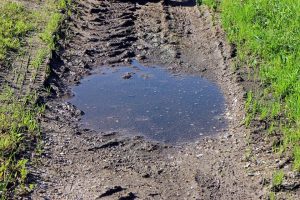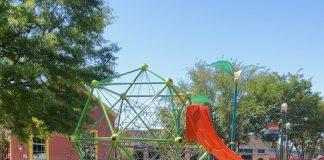I’m going to be honest right out the gate… you know how you keep hearing about the resurgence of victory gardens? That’s me: 100% obsessed with growing vegetables in my backyard. This isn’t the first year I’ve had a vegetable garden, there have actually been 3 or 4 gardens in my past. But, for some reason, my summer garden of 2020 took our relationship from a casual fling to a passionate love affair and I’m here for all of it. In fact, I’m taking a 10 week virtual home gardening course through LSU Ag just to solidify my commitment. (There are 30,000 students in the course, who’s with me?)
Anyone who really knows me isn’t surprised by any of this, it’s been right below the surface for years. I am continually surprised, however, by how much I’m learning about myself as I dig deeper into my garden. (I’m also floored by how much of our yard my husband has agreed to let me till up, without any complaining…but that’s a conversation for another day.)
Standing Water
So, we have homework for this Home Gardening Course right? That and a couple of videos to watch each week; my nerdy soul has never been happier. A few weeks ago, we did a test of how well our garden soil drained. Well, the parts that I tested did well, too well actually, and I was able to understand why the heck I had to water my cucumbers so much! There’s a whole new section of the garden though, that I’m prepping for the fall and it didn’t get the same kind of attention.
Then, a few weeks back, we were blessed with rain… daily! It was beautiful! Now it’s over. But, curiously enough, I still had puddles of standing water. Truly, three days without rain in 90+ degree heat and the puddles were there. The old me would’ve thought “too much water” right? Wrong! The newly informed me realizes that the water on the surface is a sign of poor drainage, which means dig a little deeper and something is missing out.
Hard Ground
I’m talking really hard. Like, I couldn’t even dig an inch under the puddles, whereas in the well-drained areas I could easily sink 3-4 inches. So the places on the surface, that seemed saturated, were actually neglected. Do you see where I’m going with this? Oh, the analogy! How many times do I saturate my day with one thing instead of getting to the stuff that really needs my attention? Where are the other places in my life, neglected but hidden by what’s on the surface? It’s not a stretch to extend this analogy to my kids either, especially as we stare down the hottest and longest weeks of summer… Too much of one thing pointing to a shortage of something else.
How did I (attempt to) fix my garden? I shoved a spade fork under the puddles, pried up chunks of dirt, and let the water run down reaching the compacted layers beneath. It was hot, sweaty grunt work but I did it, in hopes that it feeds us all in the long run. And by feeding, you know what I mean… sure the veggies that I dream of picking when the cooler weather is here, but it’s more than that. It’s the emotionally neglected areas, that I really need to reach. Is it safe to assume that anything in excess might be the sign of a deeper problem?
Messy work
The answer to that question leaves me with so much messy work to do. Maybe all of this is a stretch for you, and you live a little more literally… I don’t blame you, my constant analogies get tiresome, even for me. (Ask my kids if you want an earful!) So the surface lesson here, is that standing water might mean there’s a problem underneath. And for those that make it all about emotions… “standing water might mean there’s a problem underneath.” 😉



















